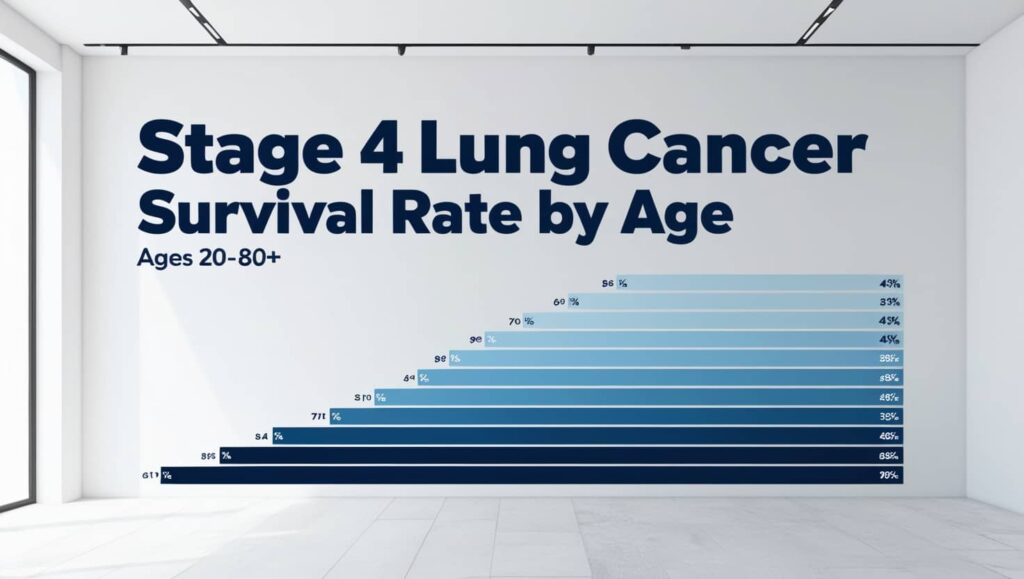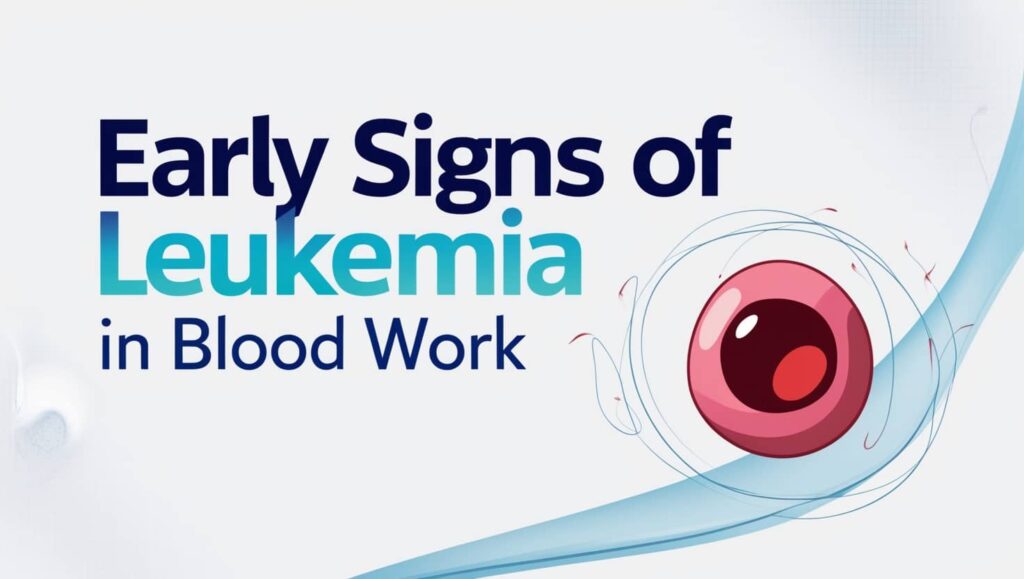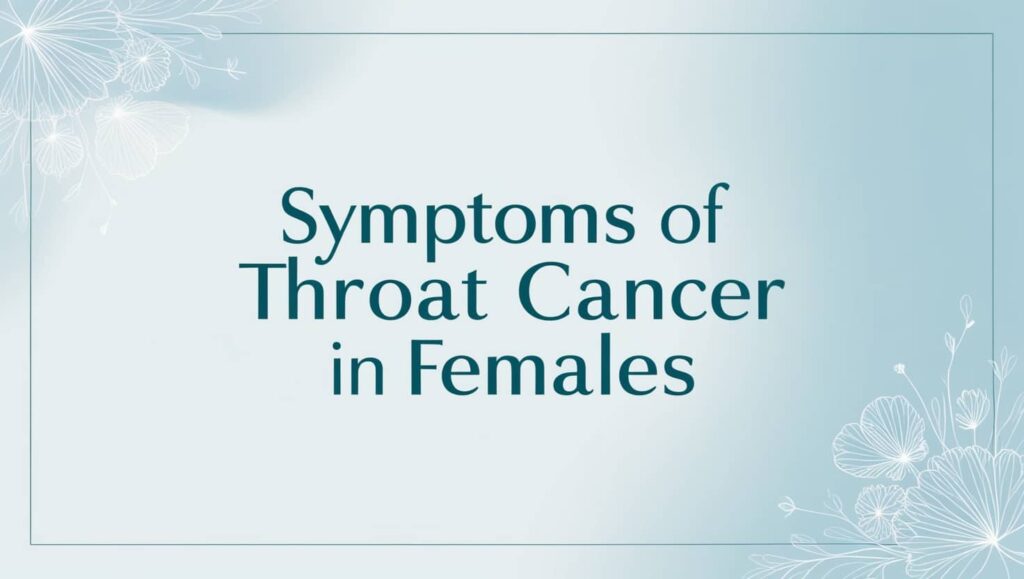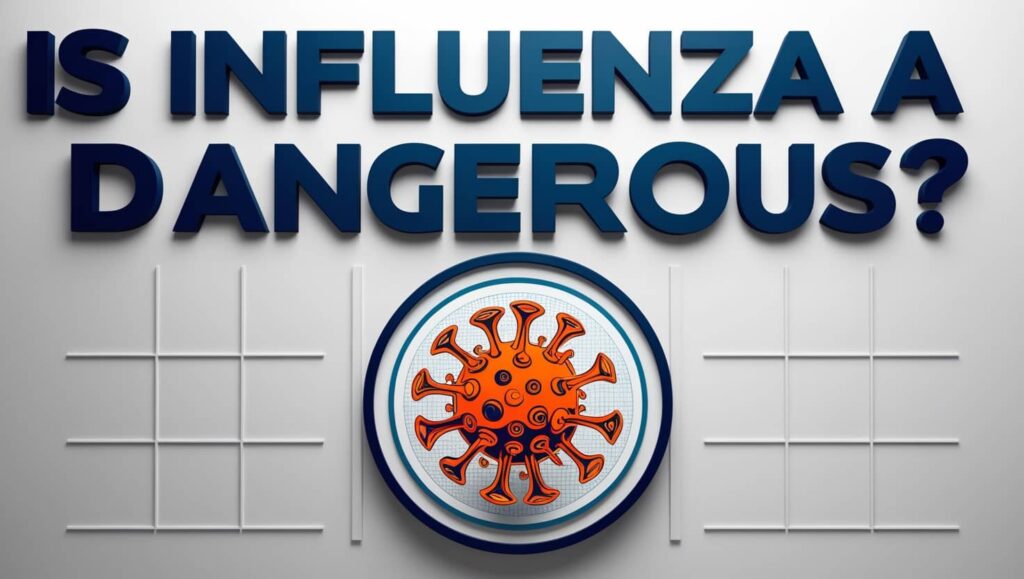Let’s discuss the symptoms of lung cancer in females and males as well. Below, we will also learn more about lung cancer treatments by age.
Lung cancer symptoms can vary widely among individuals. Early-stage symptoms often affect the respiratory system, while later-stage symptoms may manifest in other parts of the body as the cancer spreads.
It’s important to note that these symptoms can mimic other health conditions, making early diagnosis crucial.
Symptoms of Lung Cancer in Female
Symptoms of Lung Cancer in Females can appear on the patient in one or more of the following ways:
- A persistent cough that does not go away or gets worse over time.
- Cough accompanied by blood.
- Chest pain.
- Shortness of breath.
- Weight loss for no apparent reason.
- Enlarged lymph nodes in the chest between the lungs.
- Recurrent pneumonia.
Therefore, the symptoms mentioned should not be underestimated, and when they occur, the required tests must be performed to ensure that the lungs are healthy and free of disease.
Keep in mind that discovering it in the early stages increases the chances of recovery.
Early Signs of Lung Cancer in Women
Initial symptoms of lung cancer in women include one or more of the following:
Hemoptysis: It is a problem of hemoptysis with mucus, whether coming from the nose, mouth, trachea, or lung.
Chronic cough: It is one of the most common early signs of the disease, as in some cases it is accompanied by pain in the chest, back, or shoulders, and it may get worse over time.
Shortness of breath: It is also known as dyspnea or dyspnoea and is a condition in which the patient feels constricted when inhaling and unable to fill his lungs.
Hoarsenes: which means changes in the voice so that it sounds hoarse or weaker, and the problem can occur for many other reasons.
Wheezing: It is a whistling sound made by the bronchi during breathing due to the narrowing of the respiratory tracts, or the rapid flow of air within them.
Other symptoms that may occur include:
- Loss of appetite
- Fatigue
- Dysphagia
- Swelling in the face or neck
- Bone pain
- Chest pain
- Chest pain or painful breathing
- Lower respiratory tract infection
- Bronchitis
- Weakness
- Shoulder problem
- Headaches
- Weight loss
- Balance disorder
- Fatter fingertips
- Jaundice
- Swelling of lymph nodes. (Rodriguez & Fuentes , 2012)
Signs of Lung Cancer in Males
Although the risk factors and subtypes of lung cancer can differ between men and women, the symptoms are often comparable.
However, men with large cell lung cancer may experience gynecomastia, a condition characterized by enlarged breasts, due to hormonal imbalances caused by the tumor.
What Does Lung Cancer Feel Like
Early symptoms of lung cancer, common to both genders, include a persistent cough that may worsen over time, especially with exertion or laughter.
Shortness of breath and fatigue are also common.
As the disease progresses, additional symptoms may develop.
Types of Lung Cancer
There are two main types of lung cancer
- Non-small cell lung cancer (NSCLC).
- Small cell lung cancer (SCLC).
There is a third, less common type known as carcinoid.
Non-Small Cell Lung Cancer (NSCLC)
Non-Small Cell Lung Cancer (NSCLC) is the most prevalent form of lung cancer, accounting for approximately 80% of cases.
It tends to progress more slowly than small cell lung cancer. NSCLC can be categorized into three main types:
- Adenocarcinoma: This type originates in the glandular tissue lining the lungs.
- Squamous Cell Carcinoma: This type typically develops near the airways.
- Large Cell Carcinoma: This type can arise anywhere in the lung and often spreads more rapidly than the other two types.
Small Cell Lung Cancer (SCLC)
There are two types of Small Cell Lung Cancer (SCLC)
- Small cell carcinoma
- Mixed small cell/large cell cancer
These types of lung cancer are often linked to cigarette smoking.
Their names are derived from their microscopic appearance. While other less common types may exist, accurate diagnosis is crucial for selecting the most effective treatment and improving patient outcomes.
Lung Cancer Diagnosis
If you are a long-term smoker and are over fifty years old, you can undergo a lung cancer screening.
This is done through X-ray, CT, and MRI scans.
You can also perform a sputum cytology examination if you suffer from coughing up phlegm, especially if the phlegm is accompanied by blood.
When lung cancer is suspected, a biopsy is performed
A biopsy is the best way to diagnose lung cancer.
It is usually performed using bronchoscopy or using a biopsy needle, where tissue is extracted from the nodules in the lung and examined microscopically or genetically.
Related: How to Check for Ovarian Cancer at Home
Lung Cancer Treatment by Stage
The most important factors on which the treatment plan for people with lung cancer depends are:
- Type of lung cancer
- The stage at which cancer was discovered and diagnosed
- The patient’s ability to breathe, or in other words, the efficiency of his lung function.
- The patient’s general health. (Gadgeel, Ramalingam,, & Kalemkerian, 2012)
Stage 1 Lung Cancer Treatment
Treatment in the early stage of the disease includes surgery, targeted therapy and chemotherapy.
For people who cannot undergo surgery, radiotherapy is used.
Surgical procedure.
It includes:
- Lobectomy: Resection of the affected lobe.
- Segmental resection: where one to four lobes of the lung are removed.
- Sleeve resection: The affected lobe and the part of the trachea connected to it are removed, then the trachea is connected to a healthy lobe.
Targeted therapy
It is used after surgery to target specific genes that can affect the growth and spread of the disease.
Radiation therapy
It is done for people who cannot undergo surgery, as the affected areas are targeted with special equipment over several sessions until the affected cells are eliminated.
Chemotherapy
It is also used after a surgical procedure, especially for people with high risk factors for recurrence.
Stage 2 Lung Cancer Treatment
Stage II (NSCLC) is divided into two types:
- Stage 2A: This means that the tumor is between 4-5 cm in size and has not reached the lymph nodes.
- Stage 2B: This means that the tumor has reached 5-7 cm in size and has spread to the lymph nodes or trachea or has caused pneumonia.
Surgical intervention, such as lobectomy, sleeve resection, or pneumonectomy, is often the standard treatment for stage II non-small cell lung cancer.
The surgeon may also remove affected lymph nodes and surrounding tissue.
Following surgery, chemotherapy and immunotherapy may be prescribed.
For patients unable to undergo surgery, radiation therapy, with or without chemotherapy, is typically recommended.
Stage 3 Lung Cancer Treatment Options
Lung cancer is usually not detected until its third and fourth stages.
Where treatment options and chances of survival decrease.
These are the options available in the third stage of the disease:
- Immunotherapy or chemotherapy before surgery.
- Surgery.
- Chemotherapy with radiation after surgery.
- Immunotherapy.
- targeted cancer drugs.
Stage 4 Lung Cancer Treatment Options
In the fourth stage, the disease has spread to a large extent in the body, but if the patient can tolerate the therapeutic measures, the following will be done:
- Taking targeted cancer drugs.
- Immunotherapy.
- Immunotherapy with chemotherapy.
- chemotherapy,
- Stereotactic radiosurgery (SRS) on any cancerous remains.
- Stereotactic radiosurgery (SRS) on the brain or whole brain radiotherapy.
Read Also: Stage 4 Lung Cancer Survival Rate by Age
References
Gadgeel, S. M., Ramalingam,, S. S., & Kalemkerian, G. P. (2012). Treatment of lung cancer . PuMed.
Rodriguez , R. B., & Fuentes , J. M. (2012). Lung cancer in women . PubMed.






